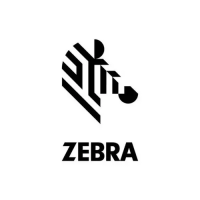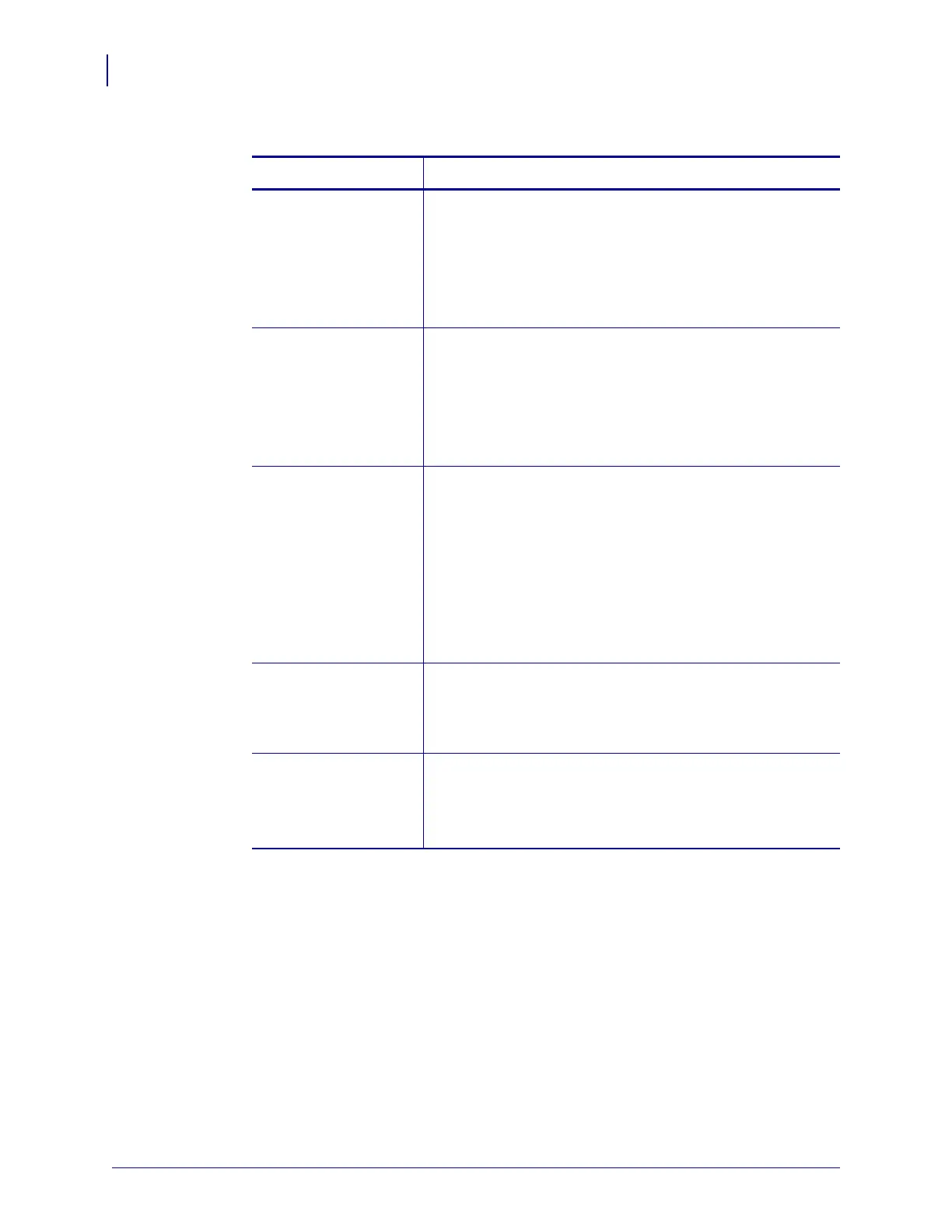Troubleshooting
Printer Diagnostics
118
79695L-001 Rev. A ZM400/ZM600 User Guide 3/27/07
5. Note the relative darkness value and the print speed printed on the best test label.
6. Add or subtract the relative darkness value from the darkness value specified on the
configuration label. The resulting numeric value is the best darkness value for that specific
label/ribbon combination and print speed.
7. If necessary, change the darkness value to the darkness value on the best test label. See
Adjust Print Darkness on page 62.
8. If necessary, change the print speed to the same speed as on the best test label. See Adjust
Print Speed on page 63.
Table 21 • Judging Bar Code Quality
Print Quality Description
Too dark Labels that are too dark are fairly obvious. They may be
readable but not “in-spec.”
• The normal bar code bars increase in size.
• The openings in small alphanumeric characters may fill in
with ink.
• Rotated bar code bars and spaces run together.
Slightly dark Slightly dark labels are not as obvious.
• The normal bar code will be “in-spec.”
• Small character alpha numerics will be bold and could be
slightly filled in.
• The rotated bar code spaces are small when compared to
the “in-spec” code, possibly making the code unreadable.
“In-spec” The “in-spec” bar code can only be confirmed by a verifier,
but it should exhibit some visible characteristics.
• The normal bar code will have complete, even bars and
clear, distinct spaces.
• The rotated bar code will have complete, even bars and
clear, distinct spaces. Although it may not look as good as
a slightly dark bar code, the bar code will be “in-spec.”
• In both normal and rotated styles, small alphanumeric
characters look complete.
Slightly light Slightly light labels are, in some cases, preferred to slightly
dark ones for “in-spec” bar codes.
• Both normal and rotated bar codes will be in spec, but
small alphanumeric characters may not be complete.
Too light Labels that are too light are obvious.
• Both normal and rotated bar codes have incomplete bars
and spaces.
• Small alphanumeric characters are unreadable.

